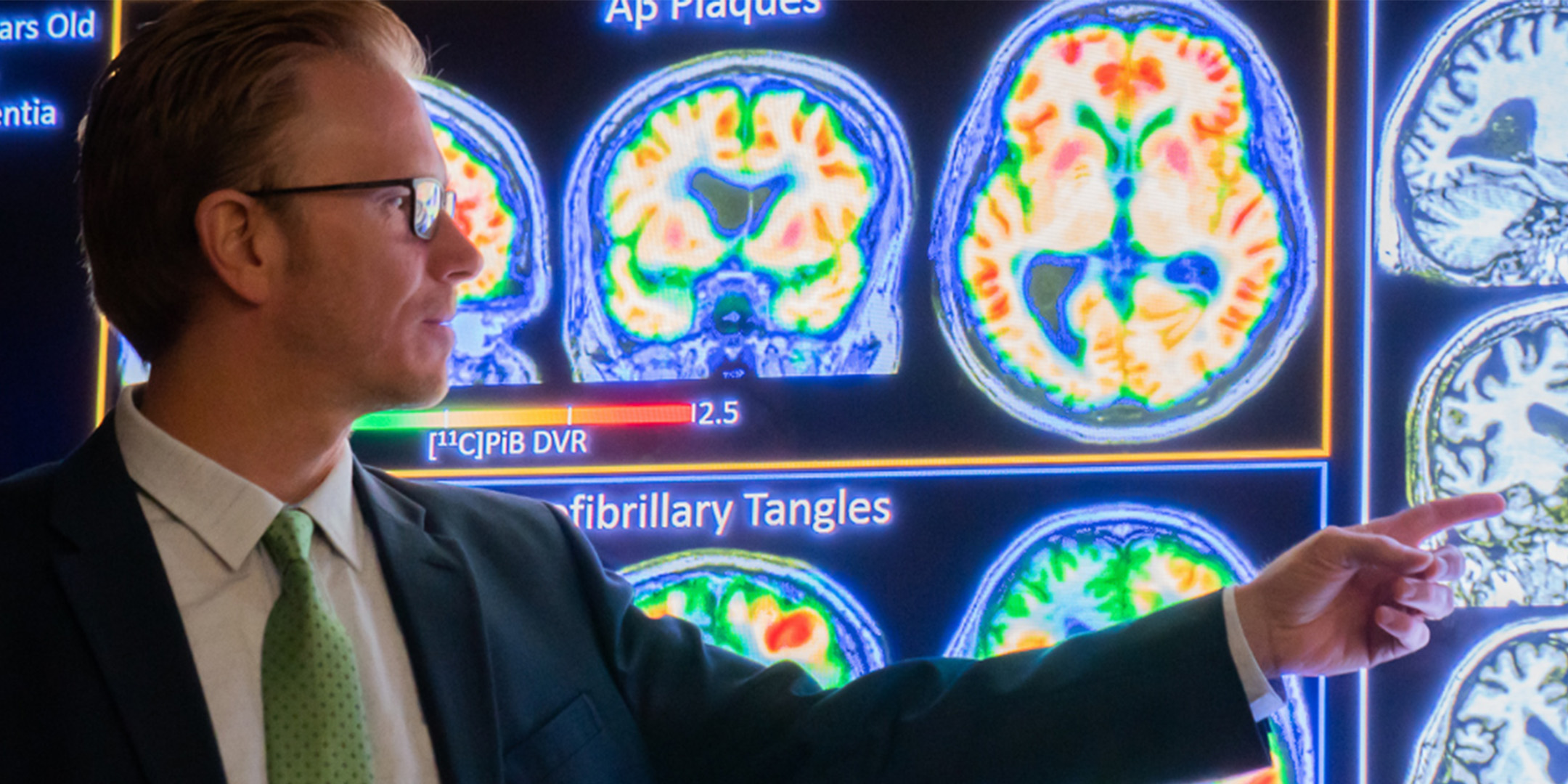
The aging demographic of the United States presents an urgent and growing challenge. As more than 56 million Americans surpassed age 65 in 2020 — with an expected increase to 85 million by 2050 — the burden of aging-associated diseases, particularly Alzheimer’s disease (AD), intensified. AD affects more than seven million Americans, ranking as the sixth leading cause of death and the only cause that is not decreasing.
At the forefront of combating this crisis stands the Wisconsin Alzheimer’s Disease Research Center (ADRC) and the Wisconsin Alzheimer’s Institute (WAI), leading a powerful partnership of federally funded and donor-supported research initiatives that are transforming the landscape of Alzheimer’s research. Bridging these two centers is the UW Initiative to End Alzheimer’s (IEA), a philanthropic program within the University of Wisconsin School of Medicine and Public Health (SMPH). Founded in 2016, IEA is the philanthropic headquarters for the essential AD programs on campus.
The Backbone: Wisconsin Alzheimer’s Disease Research Center and Wisconsin Alzheimer’s Institute
The Wisconsin ADRC, established in 2009, was the first geriatrics-based center of excellence in dementia research in the United States. Led by director Sanjay Asthana and supported by the National Institutes of Health (NIH), the ADRC investigates every aspect of AD, including molecular biology, imaging biomarkers, epidemiology, treatment, prevention, and community engagement.
Also on campus, the WAI is home to WRAP — the Wisconsin Registry for Alzheimer’s Prevention — an NIH-funded longitudinal study led by principal investigator Sterling Johnson, Vilas Distinguished Achievement Professor and clinical neuropsychologist, who has devoted his career to studying Alzheimer’s disease and related dementias. WRAP includes over 1,700 participants who enrolled in midlife, providing over two decades of data on cognitive health and risk factors. Together, ADRC and WRAP offer unprecedented datasets and participant cohorts for cutting-edge AD research utilized by scientists globally.
A Nationwide Collaboration: CLARiTI
With a $150 million NIH grant, CLARiTI (Clarity in Alzheimer’s Disease and Related Dementias Research Through Imaging) is the largest NIH research award in UW–Madison’s history. Spearheaded by Johnson, CLARiTI unites all 37 U.S. ADRCs to standardize imaging and biomarker data collection in 2,000 diverse participants.
This five-year initiative integrates MRI, PET imaging, blood biomarkers, and brain autopsies to understand mixed dementia causations, where vascular, Lewy body, and Alzheimer’s pathologies coexist. The effort addresses key knowledge gaps and builds a platform for future diagnosis and treatment strategies.
A Gamechanger: The Role of Private Philanthropy
While federal support powers core research infrastructure, private philanthropy accelerates innovation, which is crucial to the success of the UW’s AD programs. The IEA Innovation Fund — launched in 2023 — provides flexible seed funding to researchers, clinicians, and teams within the ADRC, WAI, and Geriatrics Division.
Contributions to the IEA Innovation Fund offer support for:
- Research on preventative lifestyle factors that can slow cognitive decline
- Bridge funding to maintain momentum during funding gaps
- Equipment upgrades essential for research, aiding early and accurate diagnosis
- Start-up costs for new programs or investigators
- Participant recruitment and retention strategies in the memory clinic network
- Education and training, including symposia and community outreach
“We are grateful to our donors and the team at the UW Foundation who were able to raise this funding in a relatively short amount of time,” says Sarah Klein, WAI administrator and co-creator of the IEA Innovation Fund. “We are humbled by the opportunity to award these funds to our best and brightest principal investigators and researchers who strive to make an impact in the field of AD research.”
The Wisconsin Model: A Template for National Change
The partnership between the federally funded ADRC and WRAP programs, plus the philanthropic support from the IEA fund, exemplifies a model of translational, inclusive, and impactful research. From molecular biomarkers to community advisory boards, and early detection to understanding lifelong risk factors, SMPH and the IEA are beacons of hope in the fight against Alzheimer’s disease. As CLARiTI expands its reach and the IEA Innovation Fund drives nimble progress, the concept of early diagnosis, tailored intervention, and ultimately, prevention of AD becomes more attainable.
The story unfolding in Wisconsin is one of ongoing collaboration, visionary leadership, and commitment to scientific excellence and social justice. With robust federal investment and philanthropic enthusiasm, Alzheimer’s research is advancing toward a future where memory loss and dementia are no longer inevitable outcomes of aging. Wisconsin’s model — intertwining ADRC, WAI, CLARiTI, WRAP, and the IEA Innovation Fund — shows that with alignment and support, meaningful progress is not only possible but inevitable.
“Donor contributions have a profound impact on our work, to the point that many aspects of my research wouldn’t be possible without them,” says Maria Mora Pinzon, physician, scientist, assistant professor, and the implementation science leader at WAI. “When we prepare grants, we add items for the research cost, like salaries for the staff, transportation for participants, and other things that we can anticipate. But there are many things that we can’t predict. People living with dementia and their families have many needs that we wish to address. These funds allow us to remain responsive to those needs, to help them share their experiences, and to use their voices to improve the research that we do.”
